Winter camping in Iceland is not cozy Instagram nonsense. It’s cold, dark, and slightly insane. Which is exactly why you should do it. Imagine a campervan parked beside a frozen waterfall while the sky explodes with green light.
The roads are icy, daylight is short, and mistakes cost comfort fast. That’s where we step in. With the right van, heating, and straight talk, it becomes survival with scenery. This guide covers campsites, gear that actually matters, and itineraries that work when winter is at its worst. Winter camping in Iceland starts here.
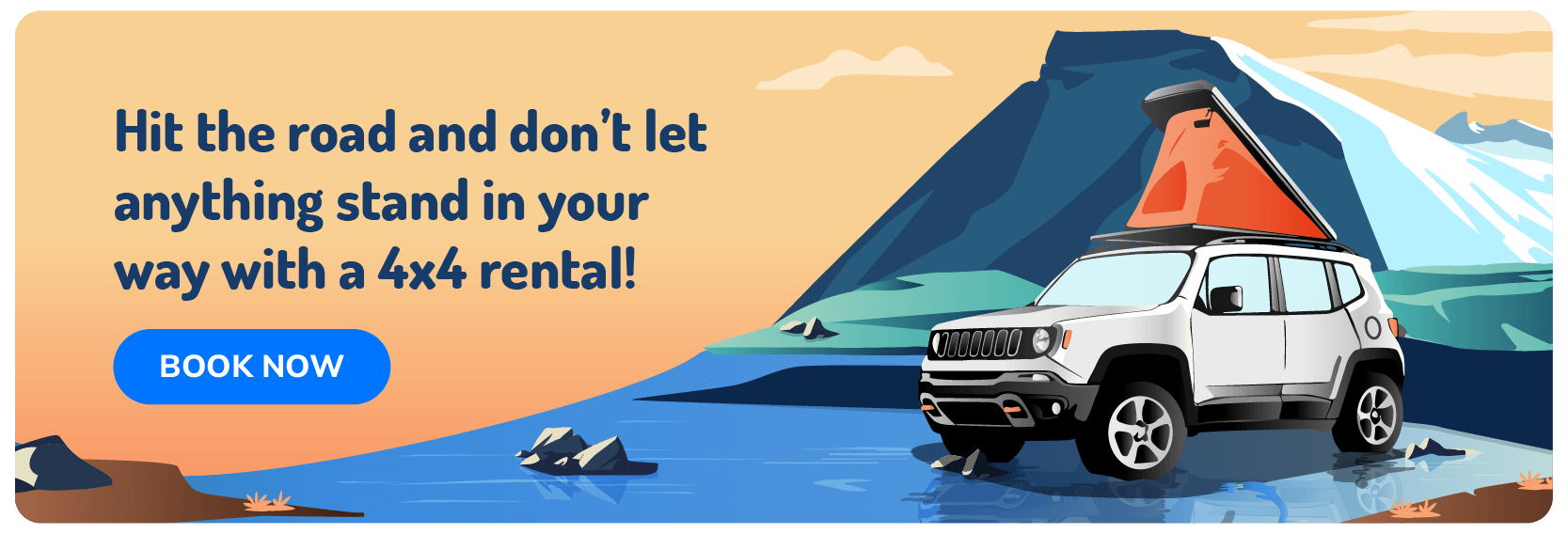
Why Try Winter Camping in Iceland?
By this stage you already know that winter camping in Iceland is not for softies. When you rent a campervan in Iceland, you’ll see how the cold turns into part of the adventure instead of the reason to quit. Here are a couple of good reasons to drag yourself into the cold instead of hiding in a hotel.
The Magic of Snow-Covered Landscapes
- Black sand beaches turned white - The pitch black beaches of Vik don’t need a filter. Snow hits the black volcanic sand, and suddenly you’re walking through a reversed photo negative. A winter road trip to Iceland doesn’t get more surreal.
- Frozen waterfalls like Seljalandsfoss in icicles - The water never stops, but the cliffs grow teeth. Ice curtains hang heavy, glinting in the weak sun. Stand too close and you’ll learn quickly why locals tread carefully.
- Silence of untouched snow in lava fields - Lava fields that once roared fire now bury themselves in silence. Snow smothers every sound. It feels like standing on another planet, alone, and weirdly at peace.

Northern Lights and Other Winter Wonders
- Aurora hunting - Northern Lights camping in Iceland works because winter nights stretch forever. In December, the south barely sees 4 hours of daylight; farther north, even less. Clear skies, low moonlight, and solar activity decide if you win the aurora lottery. Best bets are Þingvellir, Snæfellsnes, or the far north, but the lights can torch the sky anywhere.
- Wildlife encounters - Arctic foxes turn ghost-white in the Westfjords while reindeer herds drift down to East Iceland’s lowlands near Mount Snæfell. Both make the snow feel alive.
- Seasonal quirks - Yule Lads, laufabrauð, and fireworks keep villages glowing while darkness rules the land.
Lower Costs and Fewer Tourists in Low Season
- Rental savings - From November to March, campervan prices drop up to 50%. Small vans like Renault Kangoo or VW Caddy rent from about 6,900 ISK/day (~$50 USD), while larger models start near 11,800–20,500 ISK/day (~$85–$150 USD). Even luxury 4x4 campers see discounts. Winter-ready vans cost slightly more but include heaters and 4WD, which you need for an Icelandic winter in a campervan.
- Campsite perks - Roughly 25-30 campsites stay open year-round near Reykjavík and the Golden Circle. Empty grounds mean prime spots, working facilities, and rare privacy compared to summer chaos.
- Golden Circle freedom - Winter strips away the traffic. Visit early or late, stay overnight in Laugarvatn or Flúðir, and explore quieter alternatives like Brúarfoss, Fontana Baths, or Fridheimar’s tomato farm.

Daylight Hours and Weather in Iceland During Winter
Daylight doesn’t cut you any slack in winter. Four hours here, maybe seven there, and then it’s gone. Add storms, ice, and wind that stings, and suddenly your schedule matters more than your bucket list. Get this wrong and you’ll be eating noodles in the dark instead of watching waterfalls.
How Many Daylight Hours to Expect During Winter Months
|
Month |
Approximate Daylight Hours |
Sunrise Time |
Sunset Time |
|
December |
4 to 5 hours |
11:16 AM |
3:30 PM |
|
January |
4 to 6 hours |
11:30 AM |
3:45 PM |
|
February |
7 to 10 hours |
9:00 AM |
5:00 PM |
|
March |
10 to 13 hours |
8:30 AM |
6:45 PM |
Average Winter Temperatures and Road Conditions
Reykjavík and the South Coast? Mild, they say. -1°C to 3°C (30°F to 37°F). Mild until the rain freezes overnight and you slide across the parking lot. Up north, it bites harder. -5°C to 0°C (23°F to 32°F). Snow sticks. Ice lingers. Driving feels like a dare.
The Highlands? Closed. Not ‘bring a bigger jeep’ closed. Just closed. Gravel roads elsewhere turn slick enough to make you pray. Route 1 gets plowed, sure, but it’s never perfect. And Iceland’s weather? Don’t even get us started. It flips faster than the mood of a teenager going through puberty. One minute clear. Next minute, blizzard.
How to Plan Your Itinerary Around Limited Daylight
- Drive smart - Early or late driving works, but icy roads in half-light turn small mistakes into big problems. Save the real daylight, about 11:00–15:00 in deep winter, for waterfalls and photo stops.
- Time your stops - Peak light belongs to the outdoors. Chase waterfalls, coastlines, or national parks when the sun shows up. Leave dawn, dusk, or foul weather for geothermal pools, museums, or cafés that keep you warm.
- Keep it short - Winter camping in Iceland means only 4-7 usable daylight hours. Stick to 1-3 hour drives, overnight near clusters, and forget marathon distances. Quality over miles
Where to Camp in Iceland in Winter
By now you’ve got the picture: Iceland in winter isn’t forgiving. Nights stretch long, weather snaps fast, and comfort is always on thin ice. Where you park up for the night becomes the difference between a good story and a bad one. Keep these handy camping hacks in mind:
Year-Round Campsites Near Reykjavík, South Coast, and Golden Circle
If you think winter means nowhere to park, relax. There are campsites open year-round in Iceland, and a few of them even come with decent perks. Here’s the best shortlist.
|
Campsite |
Region |
Location Highlights |
Facilities |
Nearby Natural Attractions & Pros |
|
Reykjavík |
Near city outskirts; easy bus to downtown |
Electricity, showers, kitchen, WiFi |
Close to Laugardalslaug geothermal pool, city shops and cultural sites |
|
|
Golden Circle Area |
Town base with urban convenience |
Electricity, showers, kitchen, laundry |
Gateway to Secret Lagoon hot spring, Gullfoss waterfall, Geysir geothermal area |
|
|
South Coast |
Edge of Vatnajökull National Park, glacier views |
Showers, toilets, laundry, heating |
Hiking trails to Svartifoss waterfall, glacier tours, Jökulsárlón glacier lagoon |
|
|
South Coast |
Between Hvolsvöllur and Seljalandsfoss waterfall |
Showers, toilets, kitchen facilities |
Close to Seljalandsfoss and Skogafoss waterfalls |
|
|
Golden Circle Area |
Near Geysir and Gullfoss |
Power hookups, showers, toilets |
Close to major Golden Circle attractions |
Facilities You Can Expect in Winter (Electricity, Showers, Kitchens)
The table above is just an example. Campsites open year-round in Iceland, all look different, and no two will hand you the same setup. Still, if you’re driving and camping in Iceland during winter, here’s what most places actually keep running:
- Electricity hookups - Power your heating and appliances, crucial for cold nights.
- Showers - Usually available, sometimes limited hours or a small fee ($3).
- Restrooms - Indoor and heated, worth gold when it is -5°C (23°F).
- Cooking areas - Sheltered kitchens so you are not cooking noodles in a storm.
- Laundry, Wi-Fi, parking, heated rooms - Hit or miss, but handy when they exist.
Why Wild Camping Is Not Allowed (Laws + Fines Explained)
Iceland’s camping rules are clear, and you can thank the few idiots who ruined it for everyone. Motorhomes and campervans outside marked campsites? Illegal since 2015. Tents? Only under strict conditions, and definitely not in national parks.
The logic is simple: Iceland’s volcanic soil and moss get wrecked fast, and once it’s gone, it takes decades to grow back. Authorities got tired of cleaning up after clueless people, so now the fines hit hard:
100,000 ISK or more, that’s about 830 in USD if you did not know. Police patrol the busy routes, and if you rent, your company will gladly dump the penalty right back on you.
Campervan vs. Tent Camping in Winter
Camping in Iceland comes with choices. Do you want four wheels, heat, and a roof, or thin nylon flapping in the wind? One is a trip, the other is a survival experiment. Here’s what you need to weigh before you decide.
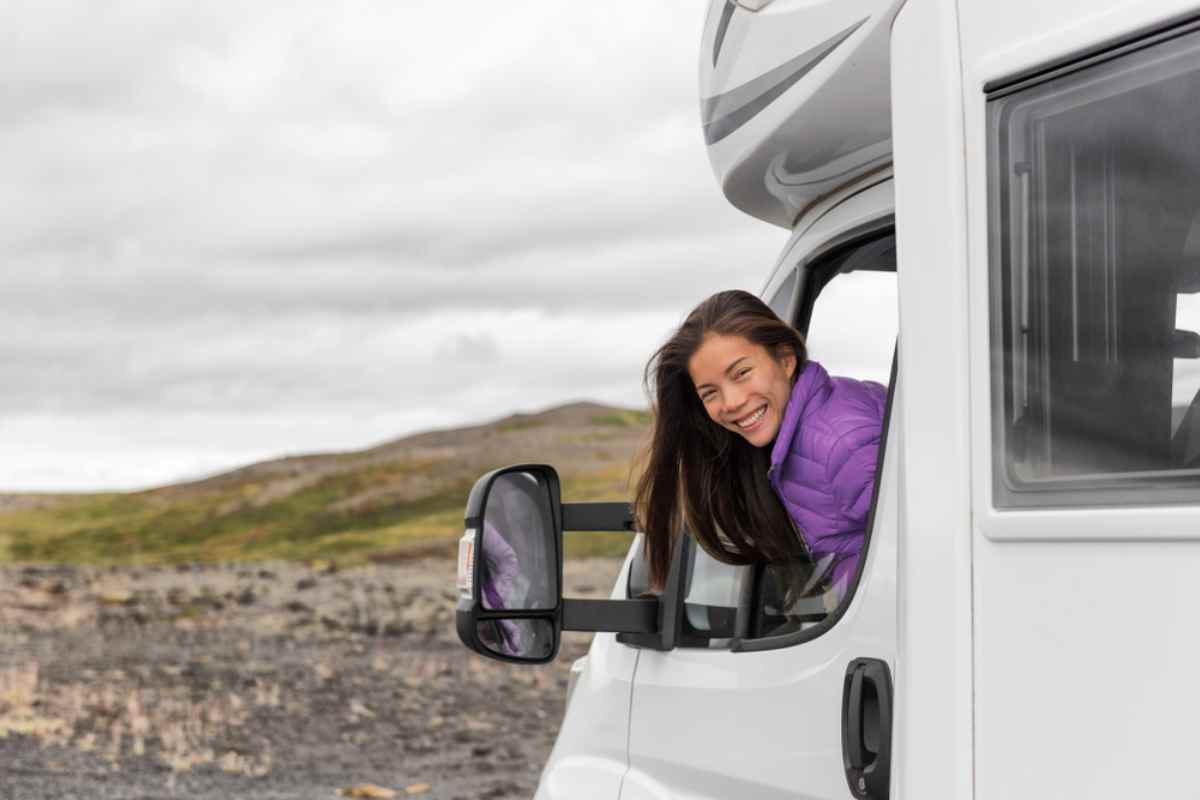
Why a Campervan Is the Safest Choice in Winter
- Storm protection - A campervan keeps the gales outside where they belong, instead of shredding your tent at 3 AM. Subzero nights feel a lot less heroic when you actually sleep.
- Built-in heating - Heaters run off electricity or fuel, meaning you wake up warm instead of chiseling ice off your sleeping bag.
- Mobility - If the weather flips, you just drive on. No packing frozen gear, no wrestling with collapsed poles. Camping in Iceland during winter works because a van keeps you moving when everything else stops.
Pros and Cons of Tent Camping in Winter (Why It’s Not Recommended)
Tent camping in Iceland during winter is more pain than payoff. A couple of upsides exist, but the downsides pile higher than the snowdrifts.
- Cost - Cheaper than hotels or campervans, so budget travelers sometimes try it.
- Adventure - Feels raw and close to nature, no buffer between you and the elements.
- Heating - None. Nights fall below freezing, leaving you exposed.
- Weather - High winds collapse tents, snow buries gear.
- Safety - Frostbite risk, legal restrictions, and slow rescue access.
Renting a 4x4 Camper for Added Safety
Driving in Iceland in winter is no joke. Roads glaze with ice, winds shove cars sideways, and snowdrifts appear out of nowhere. Here’s how an Iceland 4x4 camper shifts the odds.
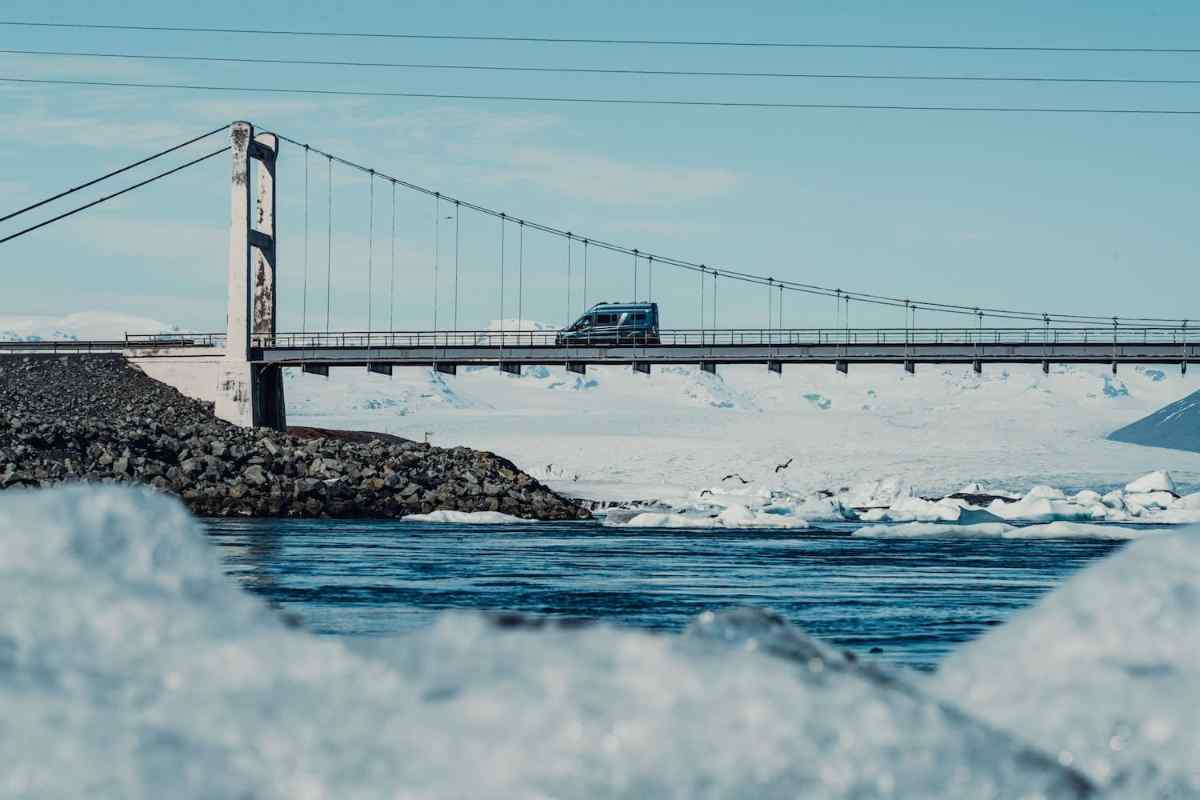
- Traction - Extra grip keeps you steadier on ice, snow, and gravel.
- Remote access - F-roads are summer territory, but winter still rewards the confidence of four-wheel drive.
- Handling - Added weight and drivetrain control tame crosswinds and sudden storms.
- Clearance - Higher stance means fewer hang-ups in snow and rough ground.
- Safety gear - Studded tires, strong brakes, and winter kits come standard.
What to Pack for Winter Camping in Iceland
If you’re not coming from an icebox like Canada, this part matters even more. Iceland’s winter punishes bad gear and rewards good planning. Pack wrong and you’ll hate every minute. Pack right, and the trip actually works. Here’s what you need to bring.
Layered Clothing Essentials
- Merino base layers - Forget cotton. Merino wool keeps heat in even when damp and dries quickly. One set is survival, two sets are sanity.
- Waterproof shell vs. insulated down - Down jackets keep you warm, but without a shell, Iceland’s wind and sleet will soak you. Pair both, swap depending on conditions.
- Extra socks, gloves, balaclava - Feet and fingers are the first to freeze. Carry spares. A balaclava or face mask shields against wind chill that feels colder than -10°C (14°F). Layers keep you moving without shivering.
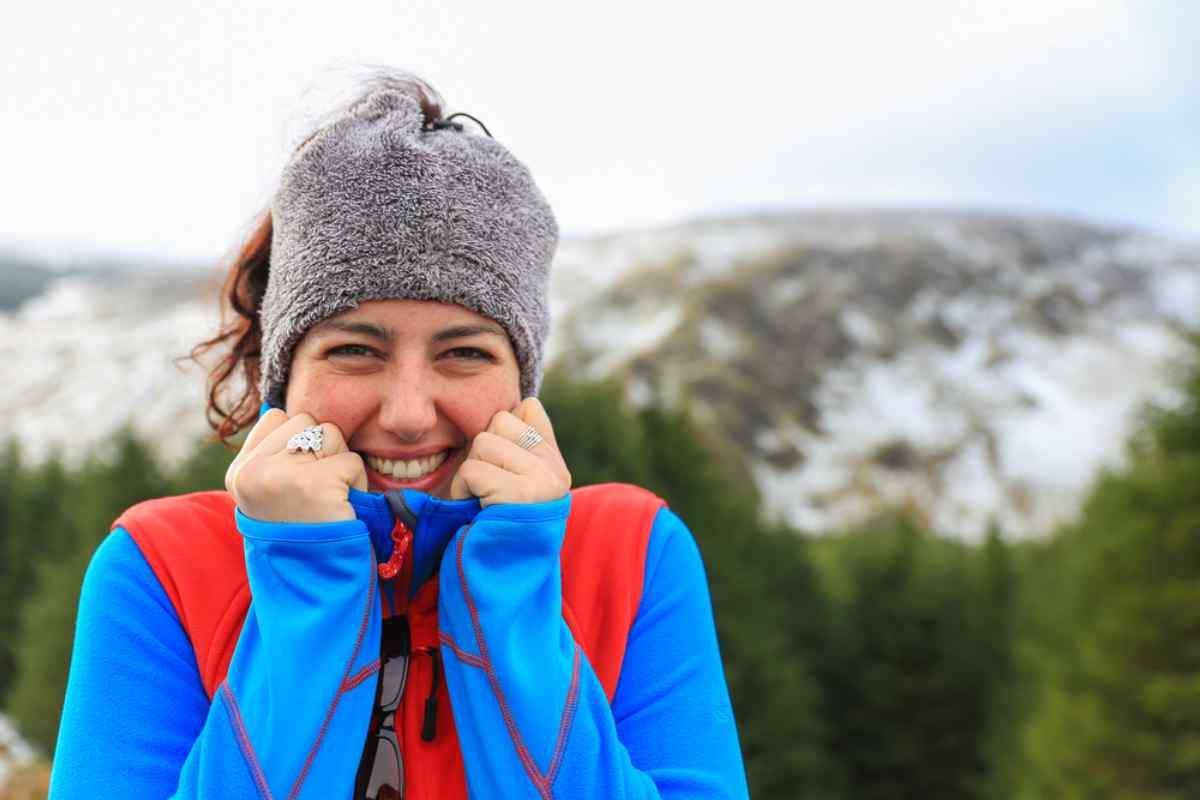
Sleeping Gear and Heating Solutions
- -20°C rated sleeping bag - Icelandic winter nights dip well below freezing. You need a bag designed for polar conditions, not a cheap summer one. We rent out sleeping bags built for this, so you don’t have to haul one across the Atlantic.
- Insulated mats - Cold seeps up from frozen ground. Double-layer mats trap body heat and stop you from waking shivering at 3 AM.
- Portable heaters for backup - Many of our campervans have built-in systems, but a backup heater or hot water bottle brings comfort when tech fails. Warm sleep is non-negotiable.
Cooking Equipment and Food Planning
- Gas stove reliability in cold - Butane can sputter in subzero temps. Propane or multi-fuel stoves stay reliable when it matters most.
- Easy one-pot meals - Soups, noodles, pasta. Less cooking time means less time freezing outside. Keep it simple.
- Non-perishable Icelandic staples - Stock flatkökur (local rye flatbread) and dried fish. Long shelf life, high energy, and sold everywhere. Pack food you can cook fast when the storm hits.
Tech and Safety Gear (Chargers, GPS, Apps)
- Extra battery packs - Cold drains batteries twice as fast, so keep power banks tucked inside your jacket instead of tossing them in the van. Frozen gear is useless gear.
- Offline maps - Don’t count on steady reception once you leave Reykjavík. Download Google Maps offline sections, or use Maps.me for full Iceland coverage without signal. Both handle backroads and campsites better than guesswork.
- Emergency beacons or SIM card - A local SIM from Síminn or Nova keeps you connected across most of the island.
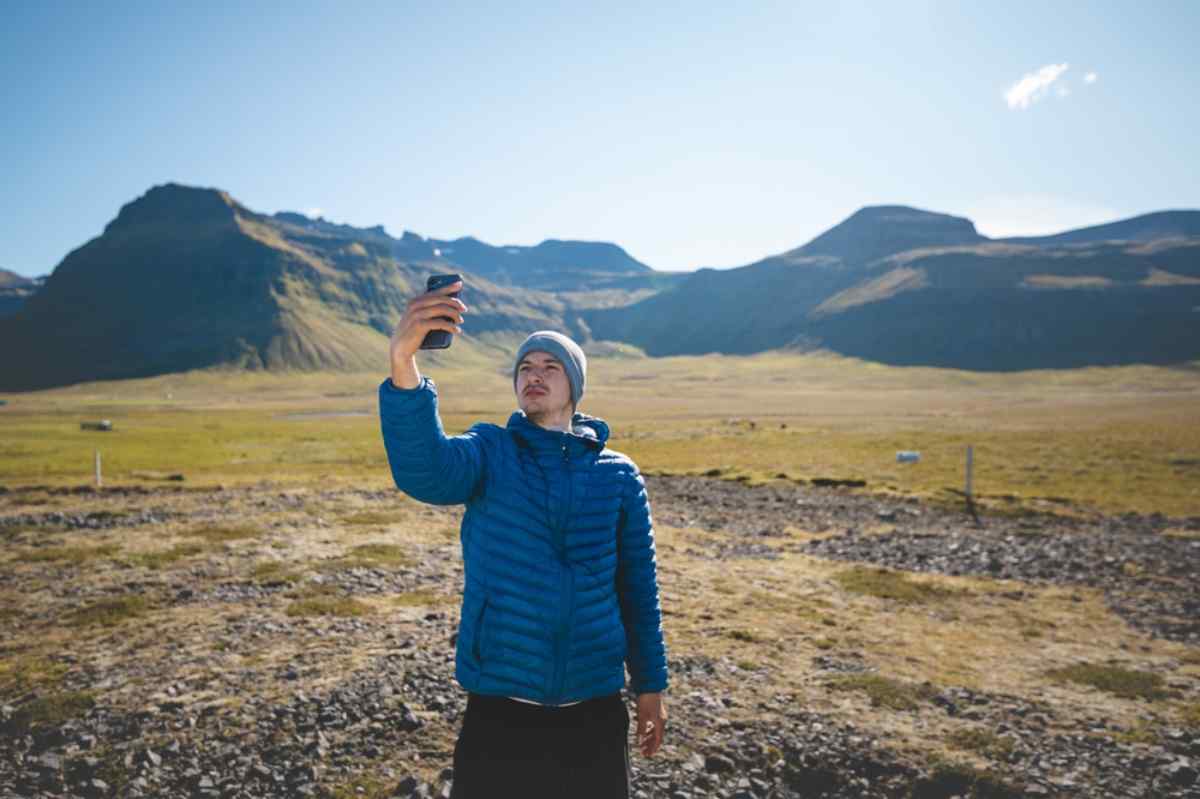
Safety Tips for Winter Camping and Driving
Safety isn’t the boring part of the trip; it’s the part that makes sure the trip actually happens. Here are some helpful Iceland winter travel tips for you:
Driving Rules and Road Conditions in Winter
- Studded tires required - Icelandic winter roads are unforgiving. Studded or proper winter tires are not optional; they’re the law. We fit them free of charge, so you don’t need to worry.
- Keep speed moderate on ice - Slow down. Black ice looks like wet asphalt until you’re sideways in a ditch.
- Never underestimate blind curves - Roads cut tight, visibility drops fast. Treat every corner like a surprise waiting to throw you.
Using SafeTravel, Vedur, and Umferdin.is for Updates
- Real-time storm alerts - Iceland’s weather turns in minutes. Apps keep you ahead of unexpected trouble.
- Road closures and detours - Route 1 might be open; everything else might not. Always check twice before moving.
- Submitting travel plans - SafeTravel.is lets you log your route. If you vanish, rescue teams know where to look. Think of it as cheap insurance.
Fuel, Emergency Kits, and Backup Plans
- Always refuel before remote stretches - Gas stations in Iceland thin out fast outside towns. Don’t gamble on ‘the next one.’ We suggest you fill up when your tank reaches half.
- Kit contents - Shovel for snowdrifts, blankets for warmth, non-perishable rations when the road says ‘not today.’
- Alternative shelter plans - If closures trap you, know where you can pull in. A heated pool or campsite beats freezing in a layby.
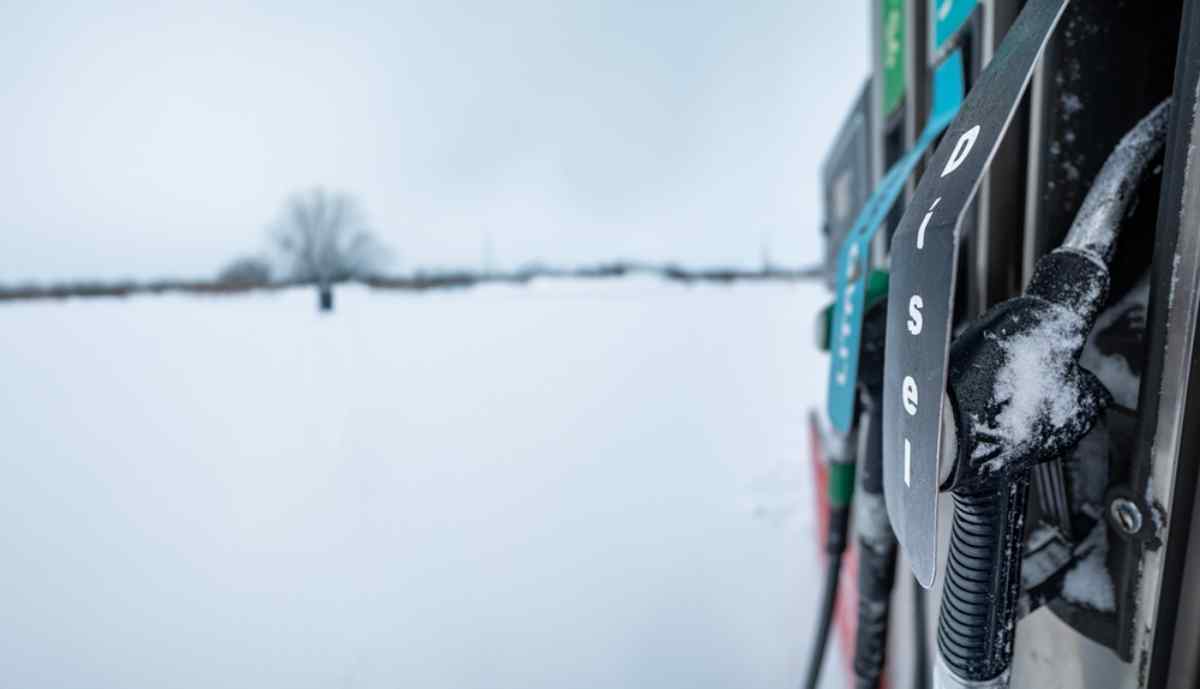
Sample Winter Camping Itineraries in Iceland
Just to make your winter road trip to Iceland a little more special, we’ve pulled together itineraries that actually work. Not the fantasy kind with ten stops a day. Real routes, real daylight, and the best spots you can hit without turning the whole trip into a survival challenge. Here’s how to spend 3 days, 5 days, or even just a short escape on the Snæfellsnes Peninsula.
3-Day Golden Circle + South Coast Itinerary
Day 1 - Golden Circle
Kick things off at Þingvellir. You’re literally walking between continents while standing on the site of Iceland’s first parliament. Not bad for a morning. Geysir is next, but it’s Strokkur doing the heavy lifting, blasting every few minutes so you actually get the shot. Wrap it up at Gullfoss, where the river crashes into a frozen canyon and throws mist in your face.
Day 2 - South Coast
Seljalandsfoss looks majestic, but save yourself the bruises and skip the behind-the-falls stunt in winter unless you like slipping around and landing on your back. Next is Skógafoss. You will hear the thunder non-stop, and if the sun bothers to show, you might catch rainbows. Reynisfjara closes the day: black sand, basalt cliffs, sneaker waves that eat unwary tourists who wander too close.
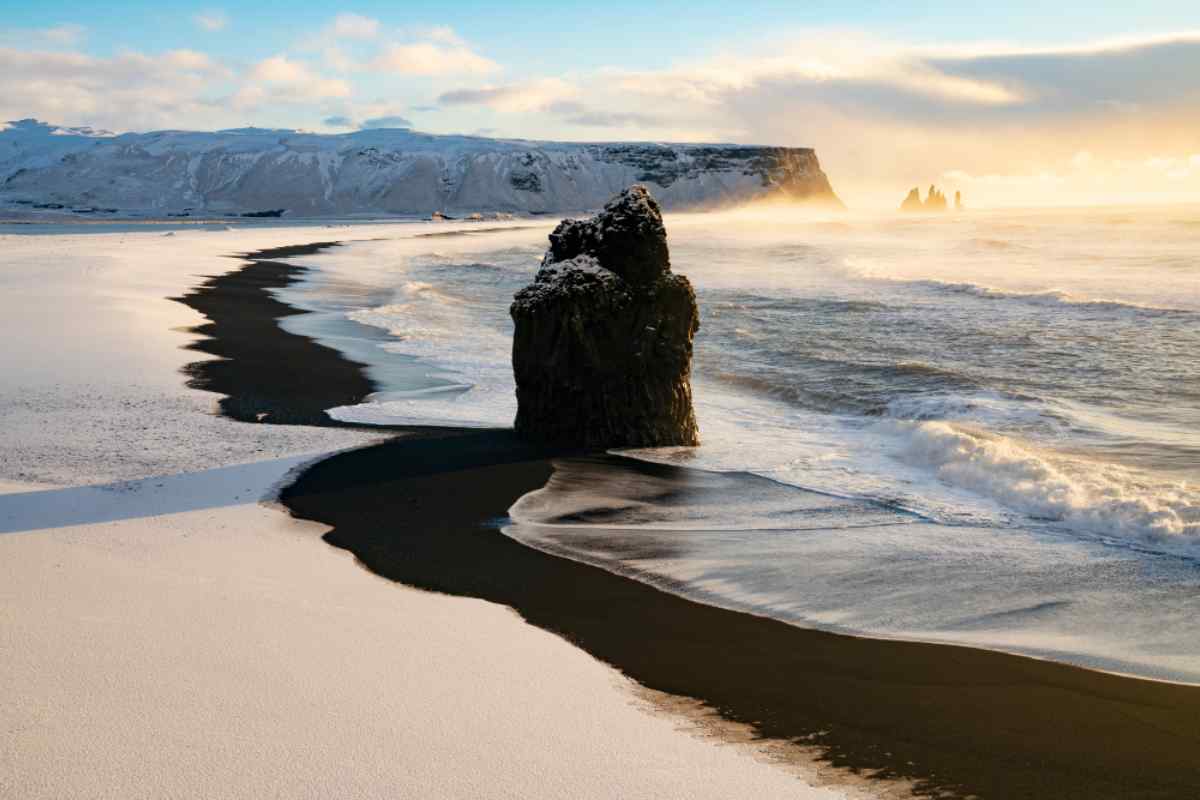
Day 3 - Overnight in Vík
Crash in Vík. It has fuel, food, and one of the few campsites that actually works in winter. Nothing fancy. Just the essentials that keep the trip moving.
5-Day South Coast + Vatnajökull Itinerary
Days 1-2 - South Coast
Yes, the same waterfalls and the same beach you’d hit on the 3-day plan. The difference is that you are not racing the clock. Two days lets you linger, watch Skógafoss in different light, actually feel Reynisfjara’s waves shake the ground, and stop when something random on the roadside catches your eye.
Day 3 - Jökulsárlón + Diamond Beach
At Jökulsárlón, icebergs break off Vatnajökull and float through the lagoon before drifting out to sea. Some crash back onto Diamond Beach, scattered like glass on black sand. It looks unreal until you are freezing on the shoreline with the Atlantic spray in your face. If conditions allow, take a boat ride on the lagoon.
Day 4 - Skaftafell National Park
If the trails allow, hike out to Svartifoss. The basalt columns frame the falls like some old cathedral, only frozen. Glacier tongues hang over the horizon, massive and silent, until they creak just to remind you they are alive.

Day 5 - Ice Caves
Vatnajökull’s ice caves are the real prize. Blue, glassy chambers that swallow sound. But only with a guide, from November to March. Anyone wandering in alone usually ends up as a cautionary tale, not an explorer.
Snæfellsnes Peninsula Short Trip
- Start with Kirkjufell. Yes, it is the mountain that clogs every postcard rack, but you will still stop and take the photo, especially when the snow dusts it just right.
- From there, wander into Arnarstapi and Hellnar. Tiny fishing villages with lava cliffs at their doorstep and fewer tour buses than in the south. The roads feel quieter out here, like you finally stepped off the main track.
- Finish the day thawing out at Lýsuhóll hot spring, water steaming in the cold air. Overnight in Stykkishólmur, one of the rare year-round campsites that actually delivers the basics.
Things to Do While Camping in Iceland in Winter
Camping is not just about parking the van and boiling noodles. Winter hands you some of the best experiences on the island if you know where to look. From ice caves to hot pools and the sky itself catching fire, the real fun starts once you step outside the camper. Here’s what makes the cold worth it.
Glacier Hiking and Ice Cave Tours
A winter road trip to Iceland is not complete without stepping onto Vatnajökull, Europe’s largest glacier. Guided super jeep rides take you into Breiðamerkurjökull outlet, where blue ice caves glow like frozen cathedrals.
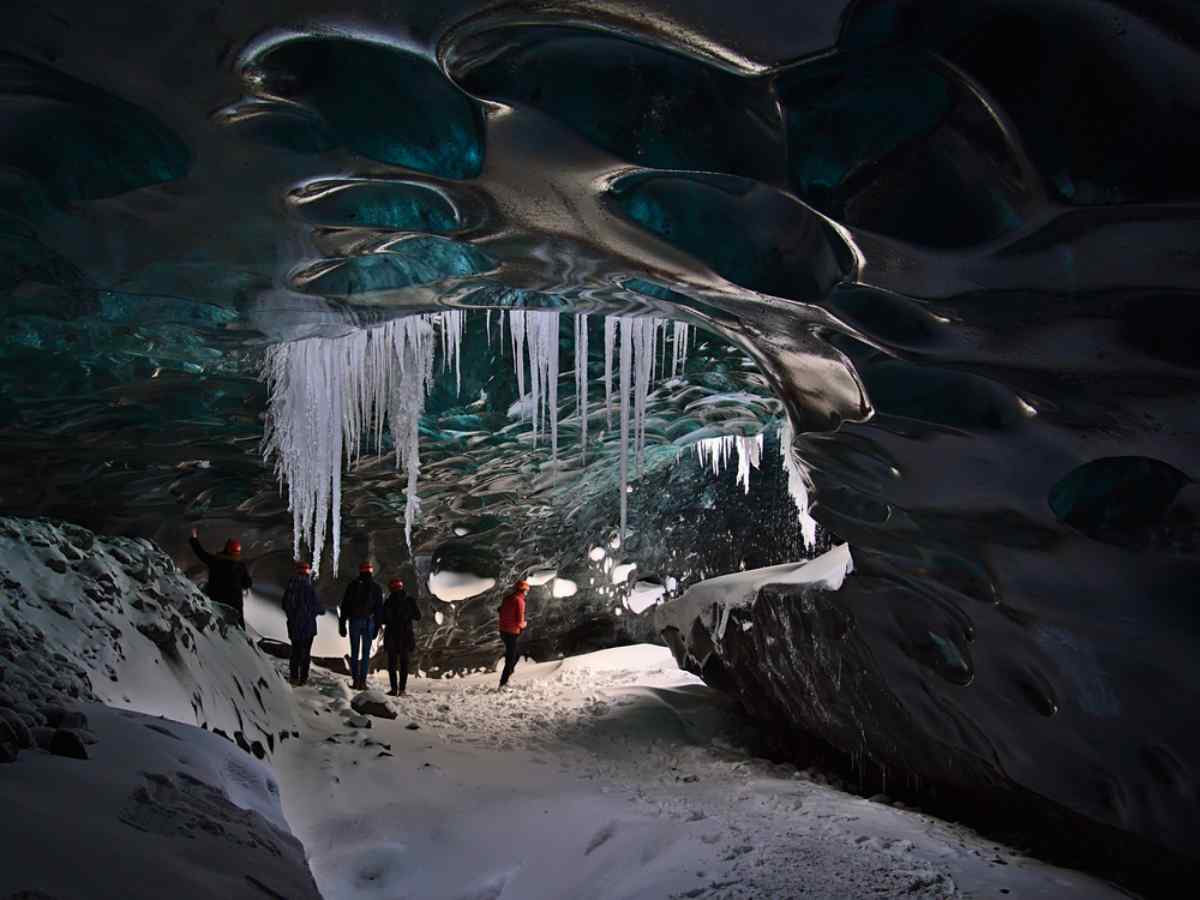
Only one group departs each day, keeping the crowds down so you actually hear the ice creak. Tours run about 3 to 3.5 hours, easy enough for anyone over eight, with small groups capped at twelve per guide. After the cave, you warm up with tomato soup and a hot drink at Frost restaurant. The caves change constantly, which means every visit feels like something no one has seen before.
Skiing and Snowboarding
If you are chasing Iceland winter travel tips that do not involve waterfalls, try clipping into skis. Akureyri in the north has Hlíðarfjall, the country’s biggest ski resort, with around 24 runs and a vertical drop of 500 meters (1,640 feet). It is not the Alps, and that is the charm.
The vibe is local, raw, and often windy, but the snow sticks from December to April. In the south, Bláfjöll near Reykjavík offers 15 lifts and night skiing when skies clear. Dalvík and Siglufjörður add small-town slopes with mountain views that feel untouched. Iceland’s ski scene is rough cut, but memorable.
Hot Springs and Geothermal Pools
Reykjadalur Valley is a 6 km (3.7 mi) round-trip hike that takes about 1.5 to 2 hours, longer if you stop for a soak. The trail climbs for 20 minutes, then opens to views of steaming pools, bubbling ground, and the Djúpagilsfoss waterfall.
At the top, you earn a bath in a thermal river where cold water tempers the heat. Stick to the paths; the ground can boil under your feet. In Reykjavík, Laugardalslaug delivers the urban version. A 50 m (164 ft) outdoor pool, hot tubs, cold plunge, and steam rooms for around 1,380 ISK. Budget-friendly and always open.
Watching the Northern Lights from Your Campsite
The best shows happen far from streetlights. Þingvellir, Jökulsárlón, and campsites on Snæfellsnes give you dark skies and wide horizons where auroras stretch across the whole ceiling.

Driving in Iceland in winter gets you there, but the real trick is staying warm while you wait. Bring a tripod, shoot long exposures between 5 and 15 seconds, and use a wide-angle lens below f/2.8.
Keep batteries warm in your pockets, or the cold will eat them alive. Remote shutter helps avoid blur. Dress for standing still in subzero, headlamp on your forehead, eyes fixed on the sky.
Frequently Asked Questions about Winter Camping in Iceland
Is it safe to camp in Iceland in winter?
Yes, if you are in a heated campervan and know what you are doing. Tents? That is just a frostbite lottery with bad odds.
Can you camp anywhere in Iceland?
No. Iceland’s camping rules killed that freedom years ago. Wild camping is banned. Stick to designated sites unless you want fines that hurt worse than the cold.
What’s the best campervan for winter in Iceland?
Pick diesel, built-in heating, and ideally a 4x4. Local fleets vary, but anything without good insulation should be left for the summer months.
How much does winter camping cost?
Campsites run cheaply, around 1,500 to 2,500 ISK (about $10-$20 USD) per person. The big spend is rental, fuel, and extras. Budget travelers scrape by, mid-range travelers relax, splurgers drive hotel-grade rigs.
No One Forgets Their First Winter Camping in Iceland
Winter camping in Iceland is half challenge, half reward. The cold will test you, the storms will surprise you, and the beauty will knock you quiet. That is exactly why it is worth doing. Rent a camper built for the season, prepare as if comfort depends on it, and chase the silence most visitors never hear.
Check out our huge fleet with heaters, 4x4s, and everything set for the deep freeze. Empty roads, empty campsites, and skies lit green are waiting. Or stay home and scroll past the same summer selfies. The choice is yours. The adventure is not on Instagram.

